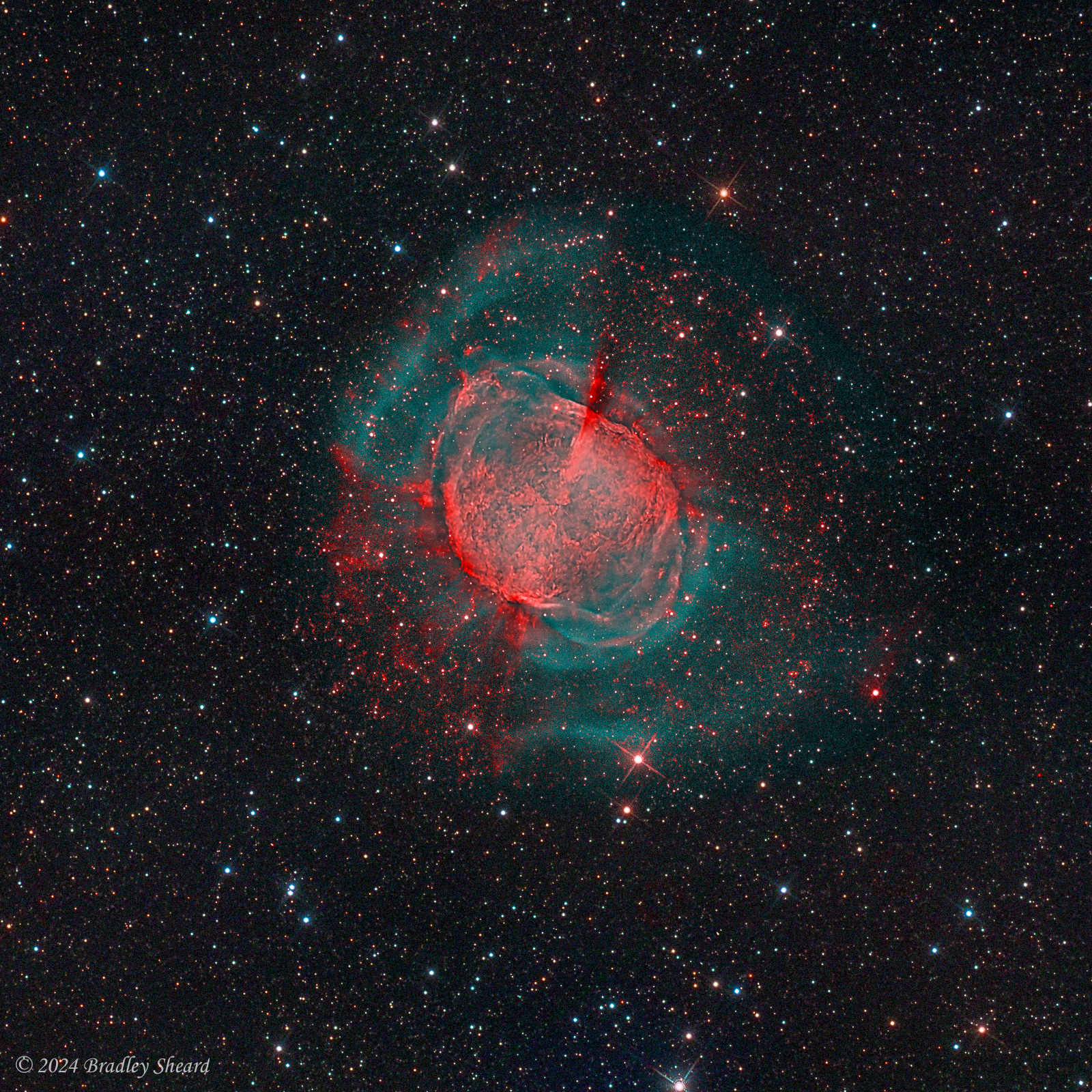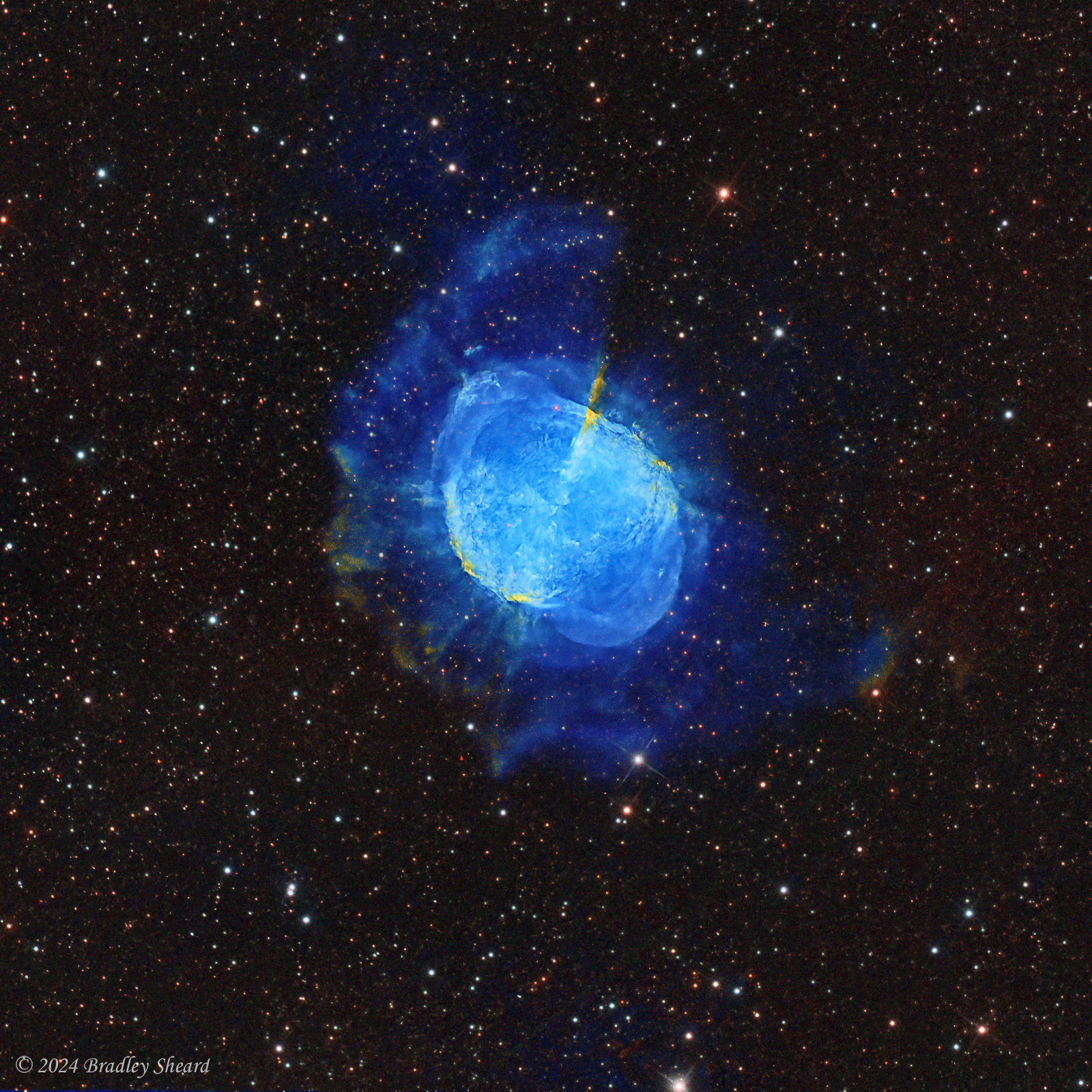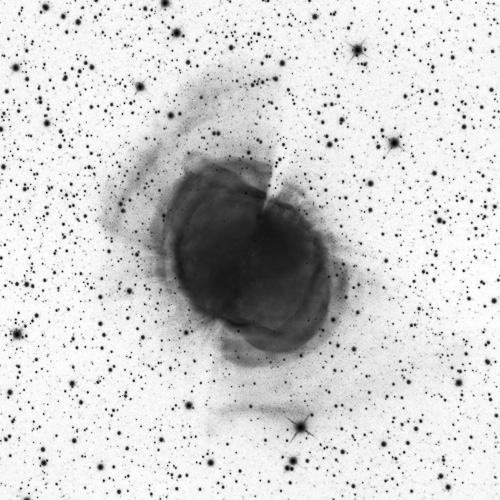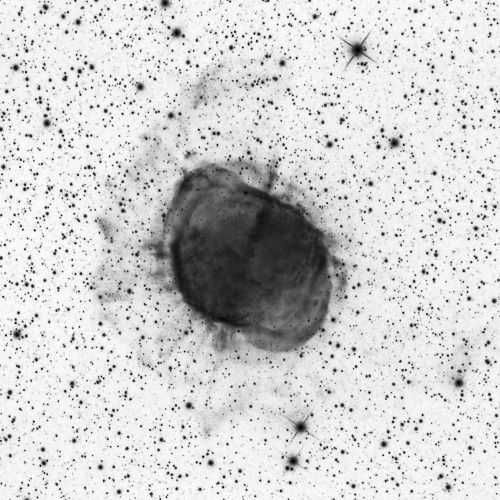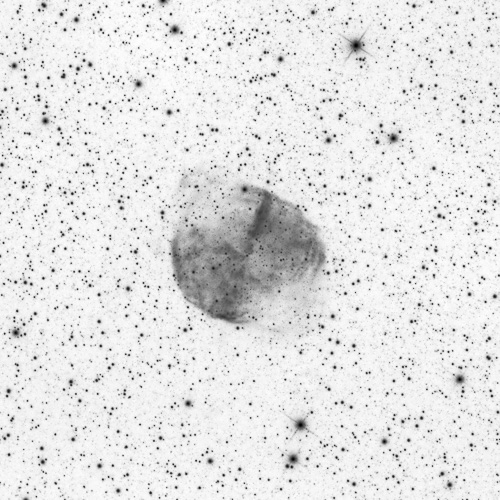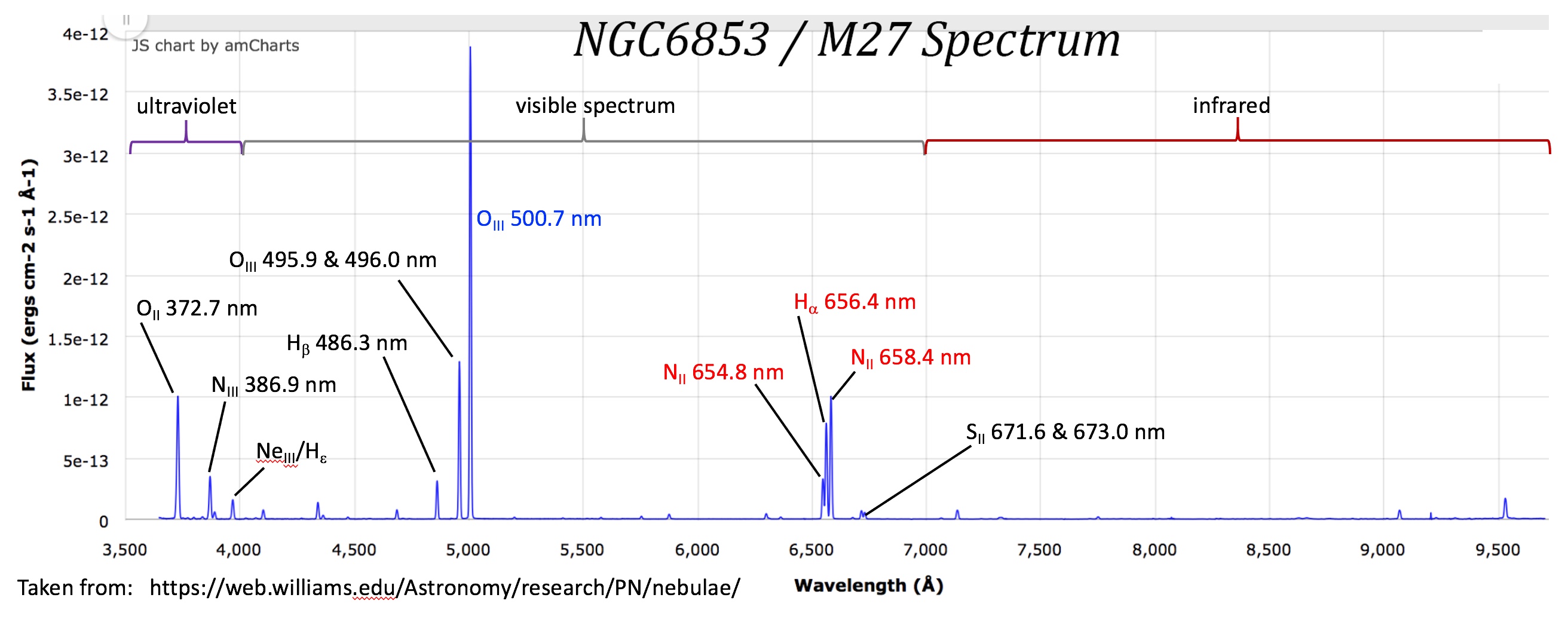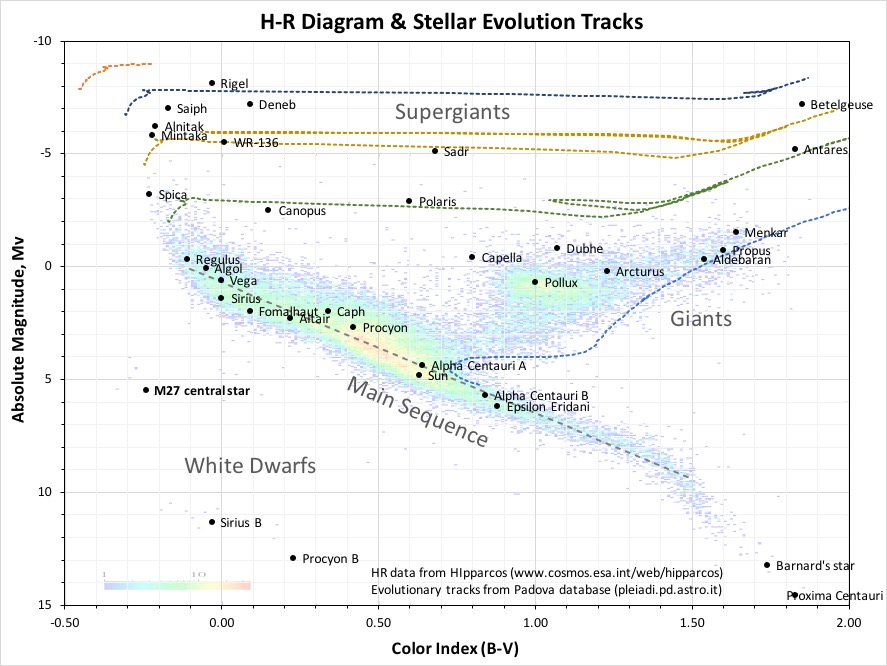M27 "Dumbbell Nebula" in the Constellation Vulpecula | |||
| « Previous | Back to Astrophotography Gallery | » Next | |
| Back to Planetary Nebula Gallery | |||
A star (like our sun) is a gigantic sphere of gaseous hydrogen and helium (with a few trace elements), large enough that its self-gravity creates a high-enough temperature and pressure in the core to fuse hydrogen into helium. This nuclear fusion is the source of the energy and light that the star emits, but eventually all stars (and our sun) will run out of fuel, and what happens next is entirely dependent on the star's initial mass. Ironically, small less massive stars can last for trillions of years, while large, massive stars live "fast and furious lives," burning through their fuel supply relatively quickly, and may last only a few million years. Stars that have an intial mass between 0.8 and 8 x the sun's, will first evolve into red giants when their core hydrogen fuel is used up. The end of central hydrogen fusion causes the core to contract, while the star's outer envelope expands and cools, shifting the light to cooler red wavelengths. As the core contracts, its pressure and temperature rises until fusion of helium, now the core's major constituent, becomes possible. The core is now fusing helium into carbon and oxygen, while a shell surrounding the core continues to fuse hydrogen into helium, adding more fuel to the core. Eventually core helum is exhausted, and stars of this mass range reach the end of the line. Central fusion ceases, causing the core to contract under its own gravity while the star's outer layers cool and expand, and the star sheds these outer layers forming a "planetary nebula" (funny name, nothing to do with planets). The carbon-oxygen core that is left behind becomes a "white dwarf" that slowly cools over billions of years, but produces no new energy. The white dwarf emits large amounts of ultraviolet radiation, which ionizes the expanding gas shell that used to be the stars outer layers. As the ionized nuclei and electrons recombine, the electrons cascade down through the available energy levels, emitting visible light photons at specific wavelengths, causing the gas shell go glow; the glowing gas shells do not last very long (in astronomical terms at least), however, and after 10,000 - 50,000 years the shells dissipate into the interstellar medium, providing material for new star formation. M(essier)27, also known as the "Dumbbell Nebula," is a planetary nebula formed by the ejecta of just such a dying star. The nebula lies approximately 0.48 kpc (1565 light-years) from our vantage point and is dominated by both H-alpha/NII and OIII emissions (mapped to red and blue, respectively in the image below). Reference 1 states that M27 is classified as a mulitple shell planetary nebula of elliptical shape, with an extended fainter halo. The multiple shell structure is clearly evident in this image, along with part of the faint extended halo. What seems quite interesting to me is that the outer halo seems to be differentiated into 2 regions, one predominately oxygen (blue-green) and one of hydrogen/nitrogen (red), and these two regions appear to be oriented 90-degrees apart. |
